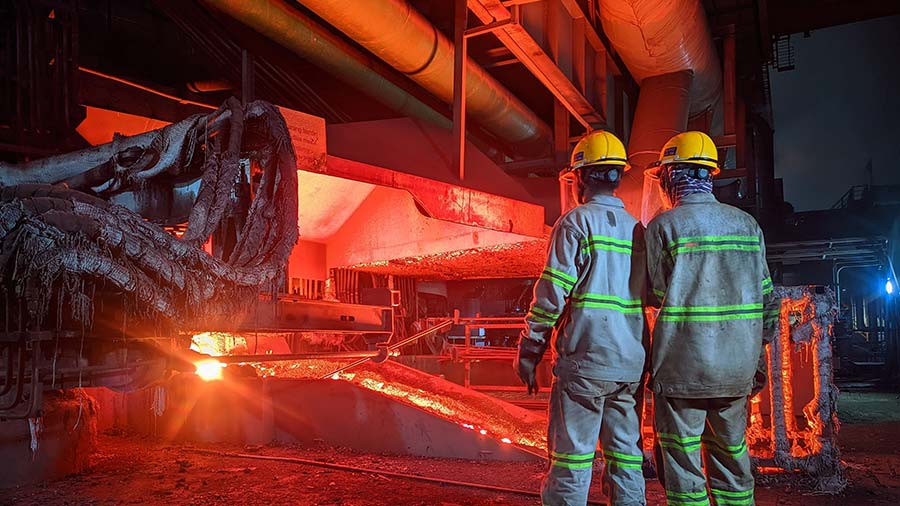Mergers and Acquisitions (M&A) frequently arise, commonly employed to outline how two companies combine their operations. Despite their often interchangeable usage, it is crucial to understand the differences. A merger represents a strategic move where two distinct entities combine to establish a new, cohesive organization, generally perceived as a cooperative and mutually advantageous arrangement. This fusion typically entails the integration of resources, personnel, and operations aimed at forging a more formidable competitor within the marketplace.
Conversely, an acquisition is defined as one company acquiring another. This condition is achieved by acquiring a majority of the target company's shares, assets, or a combination thereof. In the wake of an acquisition, the acquirer usually maintains its original name and identity, while the acquired entity may either dissolve or be absorbed into the larger conglomerate. Distinct from mergers, acquisitions can manifest as either harmonious or adversarial, depending on the target company's management's receptiveness to the takeover.
The motivations driving mergers and acquisitions are varied, from the ambition to expand market presence, diversify product lines or services, mitigate competition, or realize economies of scale. These strategies are pursued to bolster the company's standing and operational efficiency in the competitive business landscape.
Mergers and acquisition regulatory framework in Singapore
The Companies Act, the Securities and Futures Act, and their related supplementary legislation govern M&A in Singapore. The Competition Act and its additional legislation apply when a transaction involves firms with a considerable market share. M&A involving corporations in regulated industries, such as insurance, banking, and telecommunications, is further governed by sector-specific regulation, such as:
- Companies Act 1967;
- Securities and Futures Act 2001;
- Competition Act 2004; and,
- Personal Data Protection Act 20212.
Takeover code
The Takeover Code serves as a comprehensive regulatory framework that governs the procedures, timing, methodologies, and documentation requirements for corporate takeovers and mergers. This framework is specifically designed for entities with primary listings in Singapore, encompassing corporations, business trusts, and real estate investment trusts (REITs). Moreover, it extends its applicability to unlisted public companies and registered business trusts with more than 50 shareholders or unit holders, along with net tangible assets surpassing the S$5 million (US$ 3.7 million) threshold. These entities are expected to comply with both the principles and the detailed provisions of the Takeover Code, wherever feasible and appropriate.
In the event of any violations of the Takeover Code, the Securities Industry Council (SIC), which holds the responsibility for the administration and enforcement of the Code, is empowered to impose sanctions. Operating under the Securities and Futures Act, the SIC possesses the authority to investigate any securities transactions that are related to takeover or merger activities. While non-compliance with the Takeover Code does not directly lead to criminal prosecution, it can be considered during legal proceedings as a factor in determining or contesting liability.
This rule is known as the "Takeover Announcement Prohibition."
Takeover Code waiver practice statement
The SIC released a practice statement on the waiver of the Takeover Code in October 2022. Unlisted public corporations may request a waiver from the Takeover Code if they meet the standards outlined in the practice statement, which include the following:
- The number of shareholders in such unlisted public company is 50 or fewer after excluding institutional investors, accredited investors, bona fide directors, or equivalent persons and entities whose sole purpose is to hold investments and whose shareholders are solely comprised of persons in the categories mentioned above ("excluded persons");
- Such unlisted public company has issued a written notification to all of its shareholders at least 21 days before such application informing them of the intention to apply for a waiver of the Takeover Code (the notification must include key protections offered by the Takeover Code, the risks associated with the loss of such protection, and a point of contact for shareholders to object to or raise queries).
- During the notice period, the unlisted public company must not have received objections from shareholders representing more than 10 percent of total voting rights;
- The unlisted public company must take reasonable steps to determine whether a shareholder or incoming shareholder is an excluded person; and
- When the Takeover Code waiver becomes effective, the public unlisted business must prominently display its Takeover Code waiver status on its corporate website and alert its shareholders and any new investors before they invest.
Special purpose acquisition companies in Singapore
The Singapore Exchange (SGX) was among the first stock markets in Asia to allow the listing of special puropose acquisition companies (SPACs). The SGX introduced a new framework to enable SPACs to list on the exchange, such as minimum market capitalization requirements, minimum SPAC IPO price, and minimum public float, among others. Singapore’s benchmark index has traditionally been dominated by companies in property and finance, but through SPACs, the SGX has set its sights on attracting tech companies. SPACs are essentially shell companies and have no commercial operations. They are formed by investors — who are called sponsors — with the sole purpose of raising money through an IPO to acquire another company, also known as a de-SPAC transaction. The process is often faster than a traditional IPO.
Other advantages with SPACs are their price certainty compared to conventional IPOS and a SPAC transaction allows the target company to negotiate its own fixed valuation with the sponsors.
The SPACs listing framework
The key features of the SPACs listing framework are as follows:
- The minimum market capitalization is S$150 million (US$110 million);
- The de-SPAC (De-SPAC refers to the process where a private company goes public by merging with a SPAC) must take place within 24 months of IPO with an extension of up to 12 months subject to conditions;
- The minimum SPAC IPO price is S$5 (US$3.68) per share;
- At least 25 percent of the SPAC’s total number of shares issued must be held by at least
300 public shareholders at the time of listing; and - All independent shareholders are entitled to redemption rights — this mirrors the US SPAC framework
Assessing suitability
The SGX will also assess a variety of factors when assessing the suitability of a SPAC listing. These include:
Profile of the founding shareholders and their experience and expertise in managing the SPAC; Business strategy of the SPAC; Articles of association of the SPAC which provide comparable shareholder protection and rights with that of a Singapore incorporated company; and Nature of the compensation of the management team.
Holding the IPO proceeds in an escrow account
The framework states that at least 90 percent of the gross IPO proceeds must be placed in an escrow account pending the completion of the business combination. The escrow agent must be an independent institution approved by the MAS and the escrow amount cannot be withdrawn except for the purpose of the business combination, the liquidation of the SPAC, or other specified circumstances.
Allowed timeframe of the completion of the business combination
The SPAC must complete the business combination within 24 months from the date of its listing with an extension of up to 12 months. If the SPAC has not signed a binding agreement by the end of the 24-month period, the SPAC can seek an extension from the SGX but with a justification as to why they require the extension. The extension must also be approved by at least 75 percent of the votes of shareholders of the SPAC (excluding the votes of the founding shareholders and the management team).
The business combination must result in a sizeable new business
The initial business or asset acquired (that is, de-SPAC) must have a market value of at least 80 percent of the amount held in the escrow fund. However, the SGX may be prepared to waiver the 80 percent threshold on a case-by-case basis.
Appointment of a financial adviser
The financial advisor’s role is similar to that of an issue manager in a conventional IPO, and so they must be accredited by the SGX.
Shareholders’ circular must be fully disclosed
The shareholders’ circular must contain prospectus-level disclosures on key areas such as:
- Financial position;
- Compliance history;
- The integrity of incoming directors;
- Permits and approvals; and
- The resolution for the mitigation of the conflict of interests.
This is to ensure that shareholders of the SPAC are making informed decisions when approving a business combination.
SPAC liquidation
The SPAC will be liquidated if the business combination is not complete within the timeframe or there is a material change to the founding shareholders or management. Upon liquidation, the remaining funds in the escrow accounts will be distributed on a pro-rata basis to all shareholders.
Aligning the interests of the founding shareholders with independent shareholders
The SPAC framework hopes to ensure the interests of the founding shareholders are aligned with the independent shareholders by subjecting the founding shareholders and management to a percentage-based minimum equity participation (MEP) requirement. The MEP is between 2.5 to 3 percent at IPO, depending on the SPAC market capitalization. Enterprise Enterprise Singapore (ESG) launched the Enterprise Sustainability Program to help.
Acquisitions process
Methods
Mergers and acquisitions (M&A) can be executed through various methods:
- For private M&A, the common structures are share sales and asset sales. The choice depends on stamp duty, licensing, and tax implications.
- Public M&A, however, mainly utilizes general offers, schemes of arrangement, reverse takeovers, voluntary delisting, and amalgamations, with general offers being predominant for public entities.
Advisors required
M&A transactions necessitate a team of advisors, including;
- Lawyers;
- Accountants;
- Valuers; and
- Financial advisors.
For public M&A, specific requirements are outlined in the Takeover Code, particularly regarding financial advisors.
Transaction duration
The time frame for M&A transactions varies based on market conditions and regulatory approvals. Public M&A transactions, governed by the Takeover Code, follow a prescribed timetable, often longer than private transactions.
Main challenges
M&A transactions may require third-party consent and approvals, especially in regulated sectors. Public M&A structures each present unique hurdles, like minimum acceptance conditions for general offers and court sanctions for schemes of arrangement.
Deal terms and pricing
- In private M&A, terms and pricing are subject to negotiation.
- Under the Takeover Code, public M&A transactions have minimum pricing guidelines based on previous purchase prices.
The nature of the offer (cash or securities) influences these guidelines.
Cash vs. Other considerations
The nature of the offer (cash, securities, or a combination) affects mandatory and voluntary general offers under the Takeover Code. Certain conditions require specific offers, like cash, if significant shares were previously purchased for cash.
Equal treatment of shareholders
For private M&A transactions, terms can vary among shareholders. However, the Takeover Code emphasizes equal treatment of all shareholders in public M&A scenarios, barring special deals unless specifically approved.
Acquisition of different securities classes
While private M&A transactions don't inherently require the acquisition of other securities classes, public M&A under the Takeover Code mandates comparable offers for each class of equity share capital.
Employee and stakeholder engagement
Employee terms typically remain unchanged in share sales. Employment contracts are transferred to the acquirer under existing terms in business transfers. Employees, pension trustees, and other stakeholders generally don't have statutory or regulatory approval rights in M&A transactions, although contractual considerations might arise.
Documentation requirements
In an M&A transaction, customary documentation may include:
- A non-disclosure or secrecy agreement
- A term sheet or memorandum of agreement;
- A contract for selling and purchase;
- Disclosure letter(s);
- A shareholders' agreement is required for private share sales; and
- Agreements for business or asset transactions, assignments, or novation.
Public M&A transactions need additional documentation such as
- The offer announcement and any additional announcements required by the Takeover Code;
- The offer document and acceptance forms;
- The target circular; and
- Irrevocable undertakings to accept or reject the offer or vote in a specific manner (where it is relevant).
Disclosure obligations
The Takeover Code specifies disclosure requirements for public M&A offers, including dealings by parties to the transaction and break fee arrangements.
Costs and expenses
The costs include fees for professional advisors and applicable taxes like stamp duty.
Public M&A transactions incur additional costs for regulatory fees, announcements, and break fees.
Necessary consents
M&A transactions might require shareholder approval for significant disposals under the Companies Act and other corporate approvals.
Approval and acceptance levels
Offers made under the Takeover Code are subject to the following conditions:
- Mandatory general offers, except when the SIC permits otherwise, hinge on the condition that the proposer and their allies secure over 50 percent of the voting rights in the target company.
- For voluntary general offers, they depend on the proposer and their associates acquiring acceptances that lead to their possession of more than 50 percent of the target's voting rights. With the SIC's consent, this threshold may be set higher.
- Partial offers are contingent on achieving a predetermined quantity or proportion of acceptances. Additionally, if these offers result in the proposer and their group gaining more than 50 percent of the voting rights in the target company, then the target's shareholders must also approve.
Shareholder approval requirements include:
- Voluntary delisting demands that the agreement of at least 75 percent of the total issued shares of the target be held by shareholders present and voting at a general meeting, with the proposer and their allies not participating in the vote.
- Schemes of arrangement require the sanction of most of the target's shareholders present and voting, either in person or by proxy, representing at least 75 percent of the share value voted at the meeting unless the High Court of Singapore decides otherwise.
- Reverse takeovers are subject to the approval of the majority of shareholders.
- Amalgamations need the endorsement of at least 75 percent of the voting members presents at a general meeting of each company involved in the amalgamation.
Cash consideration commitment
Under the Takeover Code, an offeror must have sufficient financial resources before announcing a cash or part-cash offer. This ensures the capability to satisfy full acceptance of the offer.
Conclusion
M&A activity in Singapore remains a vibrant and essential aspect of the corporate scene, underscored by robust regulations, including the Takeover Code and the Singapore Exchange Listing Rules. This spectrum encompasses private deals, such as share or asset purchases, and public transactions, like open offers and consolidations. Singapore's M&A framework expertly balances the need for negotiation flexibility with stringent regulatory oversight to ensure transactions are conducted fairly and transparently. The involvement of advisors is pivotal, with transaction durations and complexities varying greatly.
With the recent establishment of SPAC listing regimes in Hong Kong and Singapore, the insurance sector stands out with an expected surge in M&A activity in 2024. This outlook is supported by the Clearwater Analytics Insurance Outlook Report 2024 findings, revealing that more than 60% of the insurers and insurance asset managers surveyed anticipate an uptick in domestic M&A activity. Private equity firms are increasingly recognizing the acquisition opportunities within these insurance markets. Nonetheless, operational efficiency and the adoption of modern systems are key to drawing the attention of prospective buyers. Regulatory shifts, diversified investment strategies, and the incorporation of ETFs into investment portfolios are also shaping the M&A scene. This ongoing development signifies a larger trend towards diversification and innovation within the mergers and acquisitions domain.






















